#baroque cathedral of the roman catholic
Explore tagged Tumblr posts
Photo
Salzburg Cathedral still contains the baptismal font in which composer Wolfgang Amadeus Mozart was baptized.

#@soaveintermezzo#salzburg cathedral#17th century#baroque cathedral of the roman catholic#austria#santino solari /italian architect & sculptor
1K notes
·
View notes
Text
Deutschribing Germany
Landmarks
Germany is the third country in the world with the highest number of World Heritage Sites: fifty-one in total, of which forty-eight are cultural and three are natural.

Aachen Cathedral
The Aachen Cathedral is a Roman Catholic church in Aachen, North Rhine-Westphalia. It is one of the oldest cathedrals in Europe and was consecrated in 805. Emperor Charlemagne was buried there.
The cathedral has two distinct architectural styles and small portions of a third. The core is Carolingian-Romanesque, the choir was constructed in the Gothic style, and the area around the throne is Ottonian.
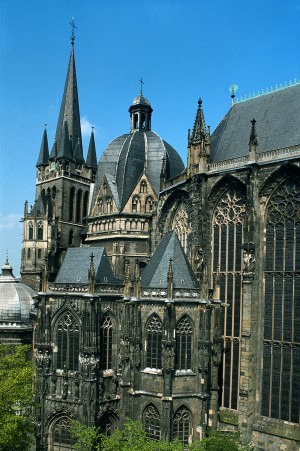
Abbey and Altenmünster of Lorsch
The Lorsch Abbey is a former imperial abbey in Lorsch, Hesse. It was founded in 764 and was one of the most renowned monasteries of the Carolingian Empire. Although in a ruined state nowadays, its remains are among the most important pre-Romanesque-Carolingian style.
The abbey combines the Roman triumphal arch (arch-shaped passageways and half-columns) with the vernacular Teutonic heritage (baseless triangles of the blind arcade and polychromatic masonry).

Ancient and Primeval Beech Forests of the Carpathians and Other Regions of Europe
The Ancient and Primeval Beech Forests of the Carpathians and Other Regions of Europe is a transnational serial nature site that includes forests in Albania, Austria, Belgium, Bulgaria, Croatia, Germany, Italy, Romania, Slovakia, Slovenia, Spain, and Ukraine.
It encompasses 94 forests of European beech, which in many cases have grown without interference since the last ice age. Those in Germany are located in Brandenburg, Hesse, Mecklenburg-Vorpommern, and Thuringia.
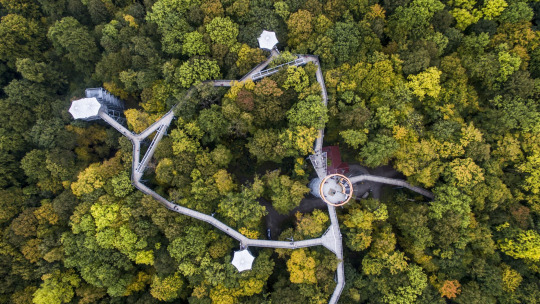
Archaeological Border complex of Hedeby and the Danevirke
Hedeby was an important Danish Viking Age trading settlement between the 8th and 11th centuries, now in Busdorf, Schleswig-Holstein. It was rediscovered in the late 19th century.
The Danevirke or Danework is a system of Danish fortifications in Schleswig-Holstein initiated in 650 and expanded during the Viking Age and High Middle Ages.

Bauhaus and its Sites in Weimar, Dessau and Bernau
Bauhaus and its Sites in Weimar, Thurngia; Dessau-Roßlau, Saxony-Anhalt, and Bernau bei Berlin, Brandenburg, comprises six separate sites associated with the Bauhaus art school, which was in operation between 1919 and 1933.
The buildings are fundamental representatives of Classical Modernism and Art Nouveau. Some of them were built as social housing, others operated as schools, and the rest of them were residential buildings.
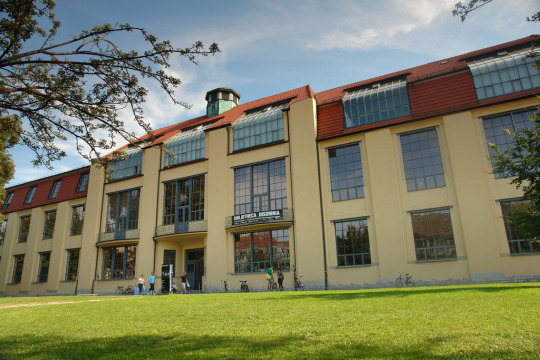
Bergpark Wilhelmshöhe
Bergpark Wilhelmshöhe is a landscape park in Kassel, Hesse. It is the largest European hillside park and the second-largest park on a hill slope in the world. Construction began in 1689 and lasted 150 years.
The park has Baroque buildings and unique fountains and water features. At the summit stands the Hercules monument, a 40-meter-high pyramid with an 8.5 meter bronze statue of Hercules.

Berlin Modernist Housing Estates
The Berlin Modernist Housing Estates site comprises six separate subsidized housing estates in Berlin. It dates from the Weimar Republic (1919-1933).
The estates are examples of the building reform movement that contributed to improving housing and living conditions of people and also provide exceptional examples of new urban and architectural typologies, as well as technical and aesthetic innovations.

Carolingian Westwork and Civitas Corvey
The Princely Abbey of Corvey is a former Benedictine abbey consecrated in 844 and located in Höxter, North Rhine-Westphalia. It was one of the self-ruling princely abbeys of the Holy Roman Empire.
An example of Carolingian architecture, it is the oldest surviving example of a westwork, whose inside contains the only known wall paintings of ancient mythology with Christian interpretation in Carolingian times.

Castles of Augustusburg and Falkenlust at Brühl
The Ausgustusburg and Falkenlust Palaces form a historical building complex in Brühl, North Rhine-Westphalia. The buildings are connected by the spacious gardens of the Schlosspark.
Built in the early 18th century, the palaces and gardens are masterpieces of early Rococo architecture. They are now used as a venue for concerts.

Caves and Ice Age Art in the Swabian Jura
The Caves and Ice Age Art in the Swabian Jura are a collection of six caves in the Swabian Alps, in Baden-Württemberg, which were used by Ice Age humans for shelter about 33,000 to 43,000 years ago.
Within the caves were found the oldest non-stationary works of human art in the form of carved animal and humanoid figurines, in addition to the oldest musical instruments ever found.
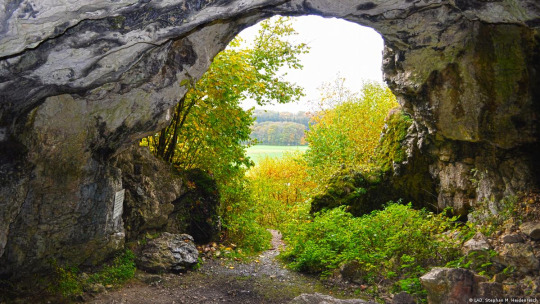
Classical Weimar
Classical Weimar consists of eleven sites in and around Weimar, Thuringia. The city was a cultural center of the Enlightenment during the 18th and 19th centuries, where many notable writers and philosophers, including Christoph Martin Wieland, Friedrich Schiller, John Gottfried Herder, and Johann Wolfgang von Goethe, lived and participated in the Weimar Classicism movement.
It includes the church of St. Peter and Paul, Duchess Anna Amalia Library, Goethe's house, Herders residence, the historical cemetery, Park an der Ilm, Schiller's house, Schloss Belvedere, Schloss Ettersburg, Schloss Weimar, Tiefurt House, Wilhelm-Ernst-Gymnasium, and Wittumspalais.
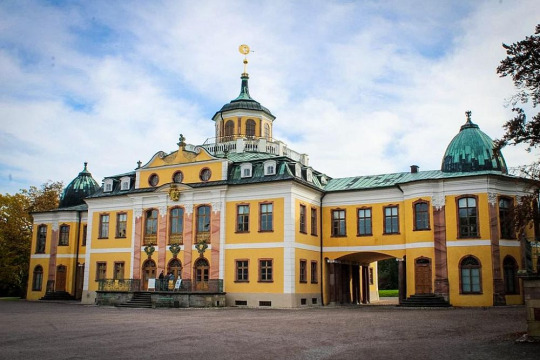
Collegiate Church, Castle, and Old Town of Quedlinburg
Quedlinburg was an influential and prosperous trading center during the early Middles Ages and a center of influence under the Ottonian dynasty.
Quedlinburg Abbey was a house of secular canonesses in Quedlinburg, Saxony-Anhalt. It was founded in 936 on the initiative of Saint Mathilda, the widow of King Henry the Fowler, as his memorial. The castle, abbey, church, and surrounding buildings are masterpieces of Romanesque architecture.

Cologne Cathedral
The Cologne Cathedral is a Catholic cathedral in Cologne, North Rhine-Westphalia. Construction began in 1248 but was halted in 1560; the cathedral was not completed until 1880.
It is a renowned monument of Gothic architecture and the largest Gothic church in Northern Europe, with the second-tallest spires. It is also the third-tallest church in the world.

Darmstadt Artists' Colony Mathildenhöhe
The Darmstadt Artists' Colony refers to a group of Jugendstil artists as well as to the buildings in Mathildenhöhe in Darmstadt, Hesse, where the artists lived in the 19th and 20th centuries.
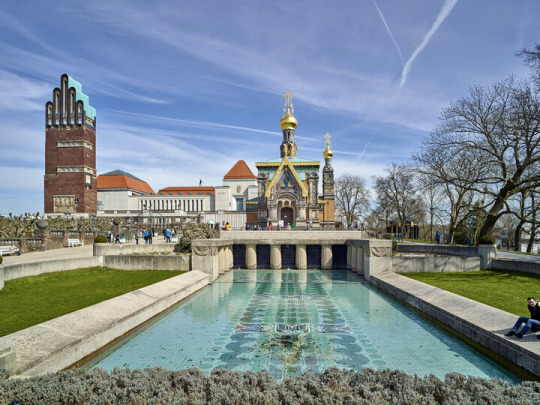
They were financed by patrons and worked together with other members of the group with similar artistic tastes.
Erzgebirge/Krušnohoří Mining Region
The Ore Mountains—Erzgebirge in German and Krušnohoří in Czech—lie along the Czech-German border in Bohemia and Saxony, respectively, and the site is shared between the Czech Republic and Germany.
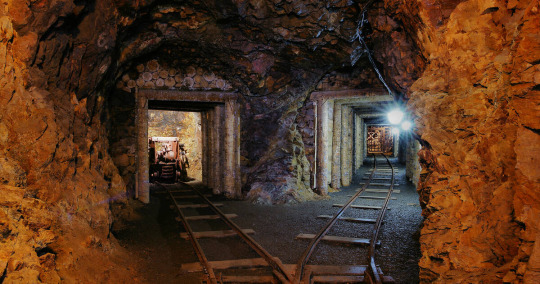
The region was the setting of the earliest stages of the early transformation of mining and metallurgy from a craft to a large-scale industry. As a result, mining directly shaped the landscape and the habitats of plants and animals.
Fagus Factory in Alfeld
The Fagus Factory is a shoe last factory in Alfeld on the Leine, Lower Saxony. It is an important example of early modern architecture.

The factory was commissioned by Carl Benscheidt, who wanted a radical structure that expressed the company's break from the past. It was built between 1911 and 1913.
Frontiers of the Roman Empire
Limes is the term used to refer to the Germanic border defense or delimiting system marking the borders of the Roman Empire and separating the empire from the unsubdued Germanic tribes between the years 83 and 260.
The Limes Germanicus are the fortifications that bounded the ancient Roman provinces of Germania Inferior, Germania Superior, and Raetia, in modern-day southwestern North Rhine-Westphalia and southwestern and southern Germany. Their total length was 568 km, and they included sixty forts and 900 watchtowers.
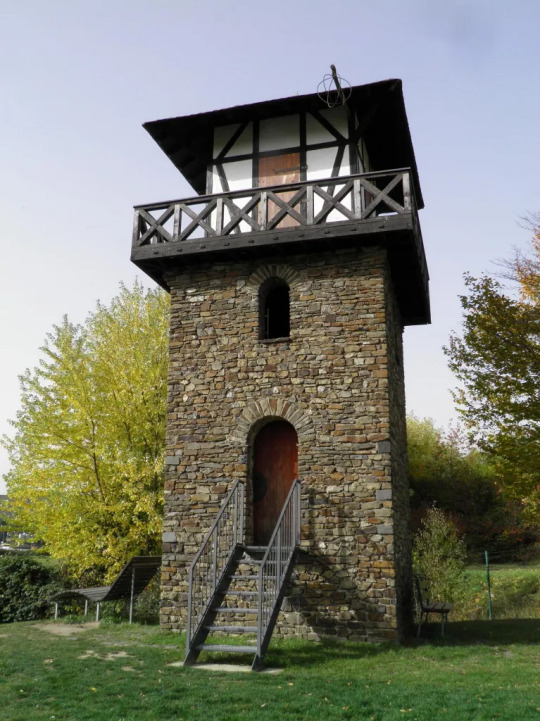
Frontiers of the Roman Empire in Bavaria
The Danubian Limes refers to the Roman military frontier along the Danube in Bavaria, as well as Austria, Bulgaria, Croatia, Hungary, Romania, Serbia, and Slovakia.
The border was reinforced with watchtowers, legion camps, and forts built around the first century. A Roman road, the Danube Way, was laid along the limes.

Garden Kingdom of Dessau-Wörlitz
The Dessau-Wörlitz Garden Realm is a cultural landscape between Dessau and Wörlitz in Saxony-Anhalt. It was created in the late 18th century and is one of the largest English parks in continental Europe.

It was designated as a world heritage site because of its exceptional landscape design and testimony to the ideals of the Enlightenment Age.
Great Spa Towns of Europe
The Great Spa Towns of Europe is a transnational site that includes eleven spa towns across several European countries, namely, Austria, Belgium, Czech Republic, France, Germany, Italy, and the United Kingdom.
Those in Germany are Bad Ems, Rhineland-Palatinate; Baden-Baden, Baden-Württemberg, and Bad Kissingen, Bavaria. All the spa towns were developed around natural mineral water springs.

Hanseatic City of Lübeck
The Hanseatic City of Lübeck, located in Schleswig-Holstein, is the second-largest city on the German Baltic coast. It was founded before 819 by Polabian Slavs and became the cradle and capital city of the Hanseatic League.
Nicknamed the "City of Seven Towers", its historic old town includes five Protestant churches with seven towers: the Lübeck Cathedral, St. Giles's, St. Jacob's, St. Mary's, and St. Peter's, as well as the Burgkloster, the Koberg site, the town hall, and the market square.

Historic Centers of Stralsund and Wismar
The Hanseatic City of Stralsund is located in Mecklenburg-Western Pomerania and is the oldest city in Pomerania. The Strelasund Crossing connects the city with Rügen, the largest island of Germany. Its old town was inscribed as a UNESCO World Heritage Site alongside Wismar because of its Brick Gothic buildings and importance in the Hanseatic League.
The Hanseatic City of Wismar is also located in Mecklenburg-Western Pomerania. Its historical old town includes the churches of St. George's, St. Mary's, and St. Nicholas's.
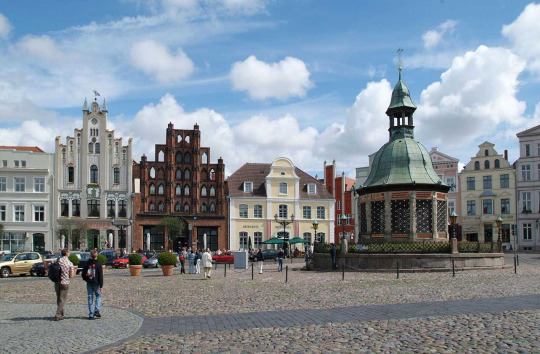
Luther Memorials in Eisleben and Wittenberg
Eisleben, in Saxony-Anhalt, was the hometown of Martin Luther, and he even preached his last sermon and died there. His Birth and Death houses are a UNESCO World Heritage Site. The town was first mentioned in the late 10th century.
Wittenberg is also famous for its close connection with Luther, as he lived in the Augustinian monastery. It was also one of the most powerful cities in the Holy Roman Empire as the seat of the Elector of Saxony.
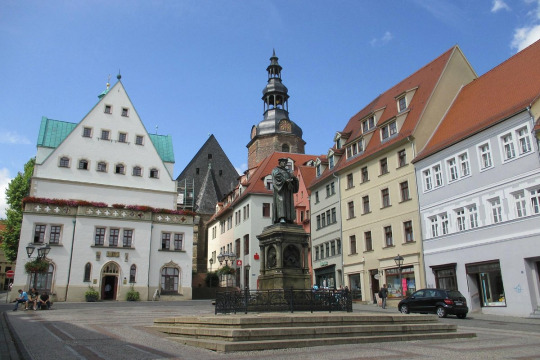
Margravial Opera House Bayreuth
The Margravial Opera House is a Baroque opera house in Bayreuth, Bavaria. It was constructed according to the plans designed by the French architect who built the court of Hohenzollern margrave Frederick of Brandenburg-Bayreuth.
The façade was inspired by the Place Vendôme in Paris and has large Corinthian columns. A balustrade is stretched across the façade, with sculptures of Apollo, Minerva, and six Muses placed atop.

Maulbronn Monastery Complex
The Maulbronn Monastery is a former Cistercian abbey and ecclesiastical state in Maulbronn, Baden-Württemberg.

Founded in 1147, the complex is surrounded by turreted walls and a tower gate. Today it houses the town hall and a police station. The monastery contains an Evangelical seminary and a boarding school.
Messel Pit Fossil Site
The Messel pit is a quarry near Messel, in Hesse. Before it fell into disuse, bituminous shale was mined there. Besides its mineral significance, it also has significant geological and scientific importance due to the abundance of well-preserved fossils and diversity of plants and animals found there.

The site almost became a landfill, but strong local resistance stopped these plans and the site was declared a World Heritage Site. Since then, discoveries about the early evolution of mammals and birds are still being made.
Mines of Rammelsberg, Historic Town of Goslar and Upper Harz Water Management System
The Rammelsberg is a mountain south of Goslar, Lower Saxony, where an important silver, copper, and lead mine is located. Before its closure in 1988, it was the only mine still working continuously for over 1,000 years.
Goslar's political importance for the Holy Roman Empire and its testimony to the history of ore mining contributed to making them a UNESCO World Heritage Site. The Upper Harz Water Regale is a system of dams, reservoirs, and ditches built between the 16th and 19th centuries to store the water that drove the water wheels of the mines, including those in Rammelsberg.

Monastic Island of Reichenau
The Reichenau Island is located in Lake Constance, Baden-Württemberg. It is connected to the mainland by a causeway and a low road bridge.
In 724, the first monastery was built on the island, and Reichenau became an influential religious, cultural, and intellectual center. The Reichenau Abbey was one of the most significant monasteries in the Frankish Empire.

Museum Island, Berlin
The Museum Island in Berlin is a museum complex on the northern part of the Spree Island. It was built between 1830 and 1930 by order of the Prussian kings.
The island consists of the Altes Museum (old museum), Neues Museum (new museum), Alte Nationalgalerie (old national gallery), the Bode-Museum, and the Pergammonmuseum, as well as the Berlin Cathedral.
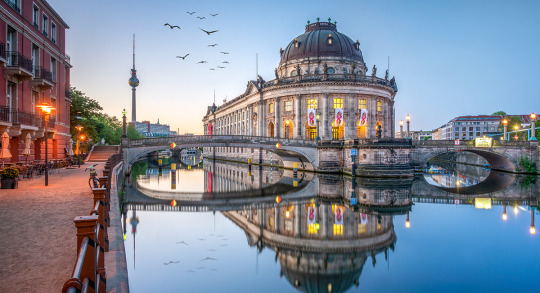
Muskauer Park/Park Mużakowski
The Muskau Park—Muskauer Park in German and Park Mużakowski in Polish—is a landscape park in Upper Lusatia, a region between Germany (Saxony) and Poland.
The site forms the largest English gardens in Central Europe and was laid out from 1815 onward. Its utopian design incorporates both native plants and the nearby town.
Naumburg Cathedral
The Naumburg Cathedral is located in Saxony-Anhalt. It dates from the 13th century and is a renowned landmark of the German Romanesque.
The west choir, the donor portrait statues of the twelve founders, and the rood screen are significant early Gothic monuments.
Old Town of Regensburg with Stadtamhof
Regensburg, in Bavaria, was an imperial Roman river fort and the political, economic, and cultural center of the surrounding region.
Its medieval center was made a World Heritage Site because of its well-preserved architecture, being the biggest medieval city north of the Alps, and historical importance for assemblies during the Holy Roman Empire.
Palaces and Parks of Potsdam and Berlin
The Palaces and Parks of Potsdam and Berlin site is a group of palace complexes and landscaped gardens in the Havelland region around Berlin and Potsdam.
Among others, the site includes the Palace and Park of Sanssouci, Neuer Garten (New Garden), Marmorpalais (Marble Palace), Cecilienhof Palace, Glienicke Palace, Park Glienicke, Nikolskoe log house, Pfaueninsel (Peacock Island), and Jagdschloß Glienicke (Glienicke hunting lodge).
Pilgrimage Church of Wies
The Pilgrimage Church of Wies is an oval Rococo church located in the foothills of the Alps in the town of Steingaden, Bavaria. It was built in the late 1740s by the Zimmermann brothers after a miracle allegedly happened there.
In 1738, tears were seen on a wooden figure of Christ at the Column. This resulted in a pilgrimage rush to see the sculpture, which led to the construction of a small chapel to house the statue. The chapel was soon expanded due to the large number of pilgrims it attracted.
Prehistoric pile dwellings around the Alps
The prehistoric pile dwellings around the Alps are a series of prehistoric stilt houses settlements in the Alps built between 5,000 and 500 BCE on the edges of lakes, rivers, or wetlands.
The UNESCO site includes 111 dwellings in Switzerland (56), Italy (19), Germany (18), France (11), Austria (5), and Slovenia (2). Excavations conducted at some of the sites have yielded important evidence regarding prehistoric life.
Roman Monuments, Cathedral of St. Peter and Church of Our Lady in Trier
The Roman Monuments, Cathedral of St. Peter and Church of Our Lady in Trier, Rhineland-Palatinate, demonstrate the political, economic, and historical importance of Trier in the Roman Empire.
The site includes the Aula Palatina, Barbara Baths, Church of Our Lady, High Cathedral of Saint Peter, Igel Column, Imperial Baths, Moselle Bridge, and Porta Nigra.
ShUM cities of Speyer, Worms and Mainz
The ShUM cities site refers to three Jewish communities in Rhineland-Palatinate: Shpira (Speyer), Warmaisa (Worms), and Magenza (Mainz). They were cultural centers of Jewish scholarship and of great importance for Ashkenazi Judaism.
Speyer contains some of the oldest and best-preserved Jewish buildings in its Jewish courtyard, while Worms has the oldest surviving in situ cemetery in Europe. Unfortunately, the city of Mainz, like many other places around the world, was the site of persecution and massacres against Jewish people.
Speicherstadt and Kontorhaus District
The Speicherstadt ("City of Warehouses") and Kontorhaus District are located in Hamburg. The Speicherstadt, where buildings stand on oak-pile foundations, is the largest warehouse district in the world. An example of Neo-Gothic and modernist architecture, the district was built as a free zone to transfer goods without paying customs.
The Kontorhaus District is the southeastern part of the old town. It is characterized by large office buildings in the style of Brick Expressionism. The area is densely built-up with many narrow alleys.
Speyer Cathedral
The Imperial Cathedral Basilica of the Assumption and St. Stephen is located in Speyer, Rhineland-Palatinate. The cathedral was built in the 11th century and features a triple-aisled vaulted basilica of red sandstone.
It is the largest Romanesque church in the world and is the burial site of several Salian, Hohenstaufen, and Habsburg emperors and kings.
St. Mary's Cathedral and St. Michael's Church at Hildesheim
The Cathedral of the Assumption of Mary is a medieval Roman Catholic cathedral in Hildesheim, Lower Saxony. It was built between 1010 and 1020 in the Romanesque style.
The Church of St. Michael is an early-Romanesque church in Hildesheim. Built in the 11th century, it is now a shared church, the main church being Lutheran and the crypt being Roman Catholic.
The Architectural Work of Le Corbusier, an Outstanding Contribution to the Modern Movement
The Architectural Work of Le Corbusier site consists of seventeen Modernist buildings in three continents by architect Le Corbusier.
The Weissenhof Estate is a housing estate in Stuttgart, Baden-Württemberg, and one of Le Corbusier's designs. It was built for an exhibition to showcase modern architecture's aspiration to provide cheap, simple, efficient, and good-quality housing.
Town Hall and Roland on the Marketplace of Bremen
The Bremen City Hall is one of the most important examples of Brick Gothic and Weser Renaissance architecture in Europe. Built in the 15th century, it is located on the market square.
Directly in front of it is the statue of Roland, which depicts the paladin of the first Holy Roman Emperor Charlemagne and hero of the Battle of Roncevaux Pass. It was erected in 1404 and the oldest surviving example.
Town of Bamberg
Bamberg is a town in Bavaria that dates back to the 9th century. It was a key link with the Slavs, especially those of Pomerania and Poland, and was briefly the center of the Holy Roman Empire.
Its medieval streets and buildings and historical significance were behind its designation as a UNESCO World Heritage Site.
Upper Middle Rhine Valley
The Upper Middle Rhine Valley or Rhine Gorge is a 65 km section of the Rhine between Koblenz and Rüdesheim in Rhineland-Palatinate and Hesse.
The rocks that form the landscape were laid down during the Paleozoic era and are known as Rhenish Facies, a type of fossil-bearing sedimentary rock mainly consisting of slate.
Völklingen Ironworks
The Völklingen Ironworks is a former blast-furnace complex in Völklingen, Saarland. Pig or crude iron production occurred at the site between 1882 and 1986.
It is one of the few intact ironworks surviving in Europe and North America and a testimony to ferrous metallurgy and the Industrial Revolution.
Wadden Sea
The Wadden Sea is an intertidal zone in the southeastern part of the North Sea, which borders Bremen, Hamburg, Lower Saxony, and Schleswig-Holstein.
It lies between northwestern continental Europe and the low-lying Frisian Islands, forming a shallow body of water with tidal flats and wetlands. The site has a high biological diversity and is an important area for breeding and migrating birds.
Wartburg Castle
The Wartburg is a medieval castle in Eisenach, Thuringia. It was the home of St. Elisabeth of Hungary and the place where Martin Luther translated the New Testament.
The castle's structures date from the 12th through 15th centuries, but the interior only goes back to the 19th century. It was an important inspiration for the Neuschwanstein Castle.
Water Management System of Augsburg
The Water Management System of Augsburg is located in the city of Augsburg, Bavaria, which is one of Germany's oldest cities, founded by the Romans.
The city's water management system has unique medieval canals and water towers and is testimony to the development of hydraulic engineering.
Würzburg Residence with the Court Gardens and Residence Square
The Würzburg Residence is a palace in Würzburg, Bavaria, whose interiors are masterworks of Baroque and Rococo architecture and art, including the largest fresco in the world.
Built in the 18th century, the residence includes large gardens in the Baroque and English garden styles.
Zollverein Coal Mine Industrial Complex
The Zollverein Coal Mine Industrial Complex is a former industrial site in Essen, North Rhine-Westphalia. The first mine was founded in 1847 and the last one closed in 1986.
The two parts of the site ranked among the largest of their kinds in Europe and were built in the New Objectivity style.
13 notes
·
View notes
Text

E. Power Biggs - Toccata and Fugue, for Organ in D Minor, BWV 565 (1974) Johann Sebastian Bach from: "The Four 'Great' Toccatas and Fugues" (LP)
Toccata and Fugue in D minor, BWV 565 Composed by Johann Sebastian Bach c. 1704. Alternatively, a date as late as the 1750s has been suggested.
Classical | Baroque | Organ
JukeHostUK (left click = play) (320kbps)
Personnel: E. Power Biggs: Organ
Produced by Andrew Kazdin
2003 Reissue Produced by Louise De La Fuente
Recorded: @ Freiburger Münster in the City of Freiburg im Breisgaum, Germany 1974
Freiburger Münster is a Roman-Catholic cathedral in the Gothic and Romanesque style, constructed between 1200 - 1513.
Released: in 1974 Columbia Masterworks Records
Re-Issued in 2003 Sony Music Records
#Johann Sebastian Bach#Baroque#Classical#E. Power Biggs#Toccata and Fugue#Toccata and Fugue for Organ in D Minor#Organ#1970's#1700's#The Four 'Great' Toccatas and Fugues
8 notes
·
View notes
Text

History of the Amalfi cathedral | Live Salermo
Amalfi Cathedral is a 9th-century Roman Catholic structure in the Piazza del Duomo, Amalfi, Italy. It is dedicated to the Apostle Saint Andrew. Predominantly of Arab-Norman Romanesque architectural style, it has been remodeled several times, adding Romanesque, Byzantine, Gothic, and Baroque elements. The cathedral includes the adjoining 9th century Basilica of the Crucifix. Leading from the basilica are steps into the Crypt of St. Andrew.
The newer cathedral was built next to the older basilica that was built on the ruins of a previous temple. The remains of St. Andrew were reportedly brought to Amalfi from Constantinople in 1206 during the Fourth Crusade by Cardinal Peter of Capua. In 1208, the crypt was completed and the relics were turned over to the church. It said that later on Manna issued from the saint's bones.
2 notes
·
View notes
Text
Visiting a Protestant church certainly is a thing when you're in Historically Catholic Country™️ with 1000 yo cathedrals and gothic architecture that is TONED DOWN because it's not fully painted anymore (people usually don't know about this but Roman and Gothic churches and cathedrals are so toned down now lol the roman church in the old town of my grandma's city has been renovated about 10 years ago and they painted everything back as it was meant to be and BOI what a vibe it is). Then you have fucking baroque churches and cathedrals with the construction process basically going like "how much gold and elaborate decorative elements do you want" "yes". And even now, there's the soon-to-be-finished Sagrada Familia which is basically the biggest Art Nouveau/Modernismo flex possible by pulling a whole cathedral in that style (and man if you ever have the possibility to visit it, do yourself a favour and get in there, it's spectacular in an incredibly relaxing manner).
So yeah uh. Protestantism does feel like the Beige Branch™️ of Christianism by comparison and I'm not even mentioning orthodox churches there because it's a whole other level of drip
One of my favorite things about the difference between Protestant denominations and Catholicism is that Protestants made their whole thing being So Fucking Boring(tm) and normal that if you were raised around Protestants with little to no connection to the Catholic Church when you find out about all the saints and rituals and bones and shit it genuinely comes off as a little like...pagan isn't the right word exactly but you know what I mean? Like for my entire life good Christians sat on folding chairs in a beige basement eating shitty donuts from Albertsons and told me liking Pokemon and Halloween made me a sinner and then I go to see an old Catholic church and there's just like. A fucking ancient corpse in the room?? That everyone is praying over??? Like????? And THIS is actually the religion all the "Pokemon normalizes devil worship" guys originally came from several hundred years ago??????
It's wild okay. It's just wild.
#crow speaks#i'm catholic only by way of baptism to please my grandmas#my father is a certified anti-clerical/anti-religions type of person and my mother doesn't care#i'm mostly an architecture nerd tbh like holy fuck I love architecture this is so interesting to study#not mentioned: the processions#like ayo we have bits of corpses allegedly of saints and every year at a given time some churchs will get them out for a procession#where I come from we also have penitent processions and no these guys have nothing to do with the KKK#if anything the KKK cunts co-opted the style of a pretty fucking old Catholic European custom#our guys just go on yearly processions for penance#anyway#yep
20K notes
·
View notes
Text









Catedral Basílica de la Inmaculada Concepción
The Cathedral Basilica of the Immaculate Conception, also Mazatlán Cathedral, is the main religious building in the city of Mazatlán, in Baroque-Revival style of Sinaloa, Mexico, and home of the Roman Catholic Diocese of Mazatlán. It is located in the historical center.
Architectural style: Baroque Revival architecture
Opened: 1899
21 de Marzo, Centro, 82000 Mazatlán, Sin., Mexico
0 notes
Text
Family Friendly Day Trips from Budapest Nature and History
Budapest, the exciting capital of Hungary, is a city packed with history, culture, and breathtaking architecture. While the city itself offers a gathering of attractions, its surrounding regions claim equally charming destinations that make for perfect day trips. These trips allow travelers to explore Hungary's diverse landscapes, quaint towns, and historical landmarks, all within a few hours' journey from Budapest. This detailed guide will explore into some of the most convincing day trips from Budapest, providing insights into their unique offerings and why they are worth visiting.
Lake Balaton the Hungarian Sea
Lake Balaton, the largest freshwater lake in Central Europe, is often referred to as the "Hungarian Sea." Located about 100 kilometers southwest of Budapest, it is a popular destination for both locals and tourists. The town of Balatonfüred on the northern shore is known for its beautiful path, thermal baths, and historical buildings. Meanwhile, the Tihany Peninsula offers stunning views of the lake, blue fields, and the Benedictine Abbey, which dates back to 1055.
Gödöllő Royal Splendor and Baroque Beauty
Gödöllő, located just 30 kilometers north east of Budapest, is home to the Royal Palace of Gödöllő, one of Hungary's most significant decorative palaces. The palace served as a favorite summer residence for Empress Elisabeth of Austria (Sisi), and visitors can tour its excessively decorated rooms and expansive gardens. The town’s botanical garden, featuring a variety of plant species, offers a peaceful setting for a relaxed constitutional.
Visegrád Medieval Majesty
Visegrád, a small town located 40 kilometers north of Budapest along the Danube Bend, is famous for its primitive stronghold and magnificent views of the river. Balanced above hills, Visegrád Castle offers breathtaking expansive views of the Danube Bend and includes the Royal Palace and Solomon’s Tower, both of which are submerged in history. The attractive curve of the Danube River is perfect for nature walks and photography, providing a beautiful backdrop for a relaxing day out.
Esztergom Cradle of Hungarian Christianity
Esztergom, located about 46 kilometers northwest of Budapest, is one of Hungary’s oldest towns and a momentous center of Hungarian Christianity. The town's most prominent landmark is the Esztergom Basilica, the largest church in Hungary and a key site of the Roman Catholic Church in the country. The sweeping views from the basilica's dome are remarkable, offering a sweeping vista of the surrounding area. The Castle Museum provides a charming look into the history of the Hungarian kings who once resided in Esztergom.
Hollókő A Step Back in Time
Hollókő, a UNESCO World Heritage site located about 100 kilometers northeast of Budapest, is an ideal destination for day trips from Budapest, transporting visitors back to medieval Hungary. This attractive village, characterized by its traditional Palóc architecture and well-preserved rural landscape, offers a unique sight into Hungary’s past. The village consists of beautifully maintained white-washed houses with traditional roofs, along with the 13th-century Hollókő Castle balanced on a nearby hill.
Pécs the Cultural Gem of Southern Hungary
Pécs, located approximately 200 kilometers southwest of Budapest, is a cultural gem that offers a rich blend of Roman, Ottoman, and Hungarian heritage. The city’s historical center is a UNESCO World Heritage site, featuring the Pécs Cathedral, which dates back to the 11th century, and the Early Christian Necropolis with its ancient interment chambers and murals. Pécs is also home to the Zsolnay Cultural Quarter, which celebrates the city’s renowned ceramics industry.
Sopron A Blend of Wine and History
Sopron, located near the Austrian border about 220 kilometers west of Budapest, is a charming town known for its well preserved medieval architecture and rich winemaking traditions. The town’s historical center features the Firewatch Tower, which offers complete views of the surrounding area, and Storno House, a museum showcasing the town’s history and art. Sopron is also part of the famous Sopron wine region, famous for its red wines, particularly Kékfrankos.
Tata the Town of Lakes and Castles
Tata, located about 70 kilometers northwest of Budapest, is a pretty town known for its beautiful lakes and historic architecture. The town's main attraction is the 14th-century Tata Castle, situated on the shores of Öreg Lake. This well-preserved castle, surrounded by scenic gardens and walking paths, offers a sight into Hungary's medieval past. The town also claims the charming Lake Derítő, a popular spot for bird watching and picnicking.
Conclusion
Day trips from Budapest offer travelers a rich embroidery of experiences, from exploring charming art towns like Szentendre to immersing oneself in the historical and grapey delights of Eger. Whether relaxing by the shores of Lake Balaton, marveling at the royal magnificence of Gödöllő, stepping back into medieval times in Visegrád, or exposing the religious significance of Esztergom, these tours provide a deeper understanding of Hungary’s diverse cultural and natural heritage.
0 notes
Text

Saint Bartholomew's Church
St. Bartholomew's (German: St. Bartholomä) is a Roman Catholic pilgrimage church in the Berchtesgadener Land district of Bavaria in Germany. It is named after Saint Bartholomew the Apostle (Bartholomäus in German), patron of alpine farmers and dairymen. The church is located at the western shore of the Königssee lake, on the Hirschau peninsula. It can only be reached by ship or after a long hike across the surrounding mountains. A first chapel at the lake was built in 1134 by the Provosts of Berchtesgaden. In 1697 it was rebuilt in a Baroque style with a floor plan modeled on Salzburg Cathedral, two onion domes and a red domed roof. The church features stucco work by the Salzburg artist Joseph Schmidt and a three-apse choir. The altars in the apses are consecrated to Saint Bartholomew, Saint Catherine, and Saint James respectively.
An annual pilgrimage to St. Bartholomew's is held on the Saturday after 24 August, starting from the Austrian municipality of Maria Alm and crossing the Berchtesgaden Alps.
Near the chapel lies the old hunting lodge of the same name. The lodge, which was first erected in the 12th century with the church, has been rebuilt several times. Until 1803, it was a private residence of the Berchtesgaden Prince-provosts; after their territory had been incorporated into the Kingdom of Bavaria in 1810, the building became a favourite hunting lodge of the ruling House of Wittelsbach; today it is an inn.
The church can be seen from a famous scenic viewpoint 743 meters above, which is called Archenkanzel.
1 note
·
View note
Text
Why visit Manila from London?
Manila is the capital of the Philippines which is located in the Manila Bay on the island of Luzon. The city has a beautiful blend of ancient and modern architecture. You can easily book flights to Manila from London and explore the spectacular city of Philippines. The capital of the Philippines, Manila, has so much to offer to the tourists as there are several attractions in the city that you’ll love, you can also indulge in incredible and fun activities. The nightlife and food scenes in Manila are amazing and you must enjoy all the local dishes here to know about their culture and relish those beautiful local dishes.
Best Time to Visit Manila
The peak tourist season in Manila is during December, January, and February. You can enjoy a lot during these months but the city will be crowded with lots of tourists and you may end up spending more on hotels and flight tickets due to the rush. If you're looking for a budget-friendly trip to Manila, you can go during March, April, and May months as these are off-season months and you can experience moderate weather which is also ideal for exploring the city and you can enjoy flight and hotel bookings at reasonable rates.
Top places to visit in Manila
The following are the top places to visit in Manila:
San Agustin Church
The San Agustin Church is a Roman Catholic Church which was completed in 1607 making it the oldest church in the country. In 1976, the Philippines government named this church as a National Historical Landmark and it also comes under the World Heritage Site by UNESCO under the collective title of Baroque Churches of the Philippines. The architecture of the church represents the Augustinians in Mexico and it is beautiful inside out.
Fort Santiago
Fort Santiago is another landmark attraction in the city. It is a citadel that was built by a Spanish navigator in 1571. Fort Santiago now is a defense fortress located in Intramuros. The fort is a great depiction of the history of the country. There are many aspects that remind you of World War II. The history of Fort Santiago dates back to the British Rule, American Colonial Period, and World War II. Now, you can find several ruins and a historical park which is a must-visit tourist place.
Manila Cathedral
The Manila Cathedral is a Roman Cathedral Minor Basilica and it is also a cathedral church of the Archdiocese of Manila. This cathedral is dedicated to the Immaculate Conception of the Blessed Virgin Mary. This architectural beauty is a Neo-Romanesque style but has a Latin cross layout. The artwork inside the cathedral is by Italian artists and they're incredible. All tourists must visit this wonderful cathedral to seek blessings to appreciate the architecture of this monument with incredible historical significance.
Intramuros
Intramuros is a historic walled city of Manila which is 0.66 square km in size. It has a historic district that is centuries older, and several fortifications just like the Spanish colonization. It is a religious and education center in Manila and all tourists coming in flights to Manila from London must visit Intramuros. It is a park today with many historic monuments, there are many education centers, and shopping districts in Intramuros. Tourists can enjoy concerts, tours, and exhibitions here and have unending fun.
National Museum
The National Museum in Manila is an umbrella for all the national museums in the country. It includes anthropological, ethnographically, archaeological, and visual arts collections. It is one of the best places to visit for all the history buffs as you can gain a lot of knowledge about the history and culture of the Philippines here. There is a central and satellite museum inside the National Museum. The satellite museums comprises Region, Area, and Site museums. You can also check out the National Planetarium in this museum to add to your knowledge here.
Manila Bay
Manila Bay is one of the most beautiful attractions in the city. It is a natural harbor that also serves as the Port of Manila. Since it is a port, the Manila Bay is primarily used for trade and commerce with its neighboring countries. The region has a very diverse ecosystem which includes upland forests, sea grass, coral reefs, mudflats, mangroves, and sandy beaches. In these areas, there are 19319 birds across 99 species and 330 families. You can find around 794 hectares of mangroves in this region. The beautiful coral reefs are a major attraction for the tourists at the Manila Bay.
Manila Ocean Park
As the name suggests, it is one of the fun places to be in Manila. It is an oceanarium that has around 14000 sea animals across 277 species. It contains 3000 cubic meters of sea water to sustain the habitat for these marine animals. The oceanarium has a 220° curved walkway tunnel which is 25 meters long and the walkthrough to the oceanarium is 55 meters long. There are around seven sections in the Manila Ocean Park and these include educational activity area, shark viewing area, jellies exhibit, function rooms for events, etc. They also have Trails to Antarctica that includes a penguin park facility which is the first in the country. You can enjoy a lot at this park with your friends and family, especially kids.
Nightlife in Manila
Manila is both a modern and ancient city with amazing nightlife scenes for the tourists. You can find everything from food, music to dance clubs, bars, lounges, and pubs in Manila to satisfy the party animal inside you. Tourists coming on flights to Manila From London must not miss out on the beautiful shopping experience on the markets of the city, especially Black Market, during the nights. Here are some of the nightlife places you can check out in Manila to have a groovy time here:
XYLO at The Palace
Royal
Bank Bar
O Bar
Metrowalk
Toshie's Sports Bar
LIT Manila
Cove Manila
If you’re not so much into parties, you can also head outside during the nights and have fun doing some of the below activities in Manila:
You can go out shopping at the Black Market. Also the music and food here is lit for you to enjoy with your partners or friends.
Karaoke Bars and Lounges are a great option to listen to music, sing, dance, and dine.
Red Light Districts in Manila are also something that many tourists may enjoy.
You can end your night at the best diner in Manila with the local delicacies and some relishing desserts.
Major Airports and Airlines Flying In and Out of Manila
The major airports in Manila are:
Clark International Airport
Ninoy Aquino International Airport
Sangley Point Airport
Subic Bay International Airport
The major airlines in Manila are:
Cathay pacific
Korean Air
United Airlines
All Nippon Airways
Cebu Pacific
Royal Air Philippines
Thai Airways
Air Swift
Cebgo
Conclusion
Manila is a beautiful capital city of the Philippines that is a very popular tourist destination in the Southeastern part of Asia. There are many attractions in Manila that all tourists love exploring. The nightlife in the city is vibrant and the food scenes are delicious with lots of seafood options available here. If you're coming on flights to Manila from London, you must explore the Manila Ocean Park and Bay Region to have immense fun with your friends and family. The cultural blend in Manila is extraordinary and is evident in their historical monuments and cultural landmarks. Overall, you can have a fun-filled vacation in Manila.
Frequently Asked Questions:
What is the best time to visit Manila?
December, January, and February are the ideal time to visit Manila.
How do I get to Manila?
You can fly from anywhere in the world to Clark International Airport at Manila. You can also get to Manila by bus, train, or car from the nearby cities and towns.
Do I need a visa to visit Manila?
You can visit and stay in Manila without a visa for 30 days provided you comply with their entry requirements and regulations.
What currency is used in Manila?
Philippine Peso is the currency used in Manila.
What are the must-visit places in Manila?
San Agustin Church, Fort Santiago, Manila Cathedral, Intramuros, and National Museum are some of the must-visit places in Manila
What are some of the famous dishes of Manila?
Some of the famous dishes in Manila are: Halo-halo, Buko pie, Max's fried chicken, Kinilaw, Filipino fusion, and Kare-kare.
What are the top nightlife activities in Manila?
The top nightlife activities in Manila are- Black Market, Live Music Bars, City of Dreams Manila, Karaoke bars, lounges, and clubs.
What are the cultural scenes in Manila?
The cultural attractions in Manila are: Intramuros, Fort Santiago, San Agustin Church, and The Manila Cathedral.
How many days are enough to explore Manila?
You can plan between 3-5 days of trip to explore the entire Manila and have lots of fun.
What are the popular areas to stay in Manila?
Makati, San Juan, Ermita, Quezon City, and Malate District are some of the best places to stay in Manila for the tourists.
For More Information Please Visit:- https://www.worldtourstore.co.uk
0 notes
Text

Sint-Salvators Kathedraal, Brugge.
Built between the 12th and 15th centuries as a parish church, this Roman Catholic place of worship was elevated to the status of cathedral in 1834 when the existing one was destroyed by the French army (ADD MORE INFO). Inside are 17th century Baroque oil paintings depicting Biblical scenes, misercords carved into the wooden seats (ADD LINK re. Lincoln Cathedral), and from up above the sounds of choral music (played at far too low a volume!) like the one I posted last year (link here). Also, large tapestries and heraldic shields decorate the walls.
I liked this painting posted below because of the skulls and bones in the corners, though it was placed too high on the wall to take a proper photo. I will try to translate the inscription later. [EDIT: Tried, insufficient result.]
It's cold today, but fairly bright sunshine, although it did rain yesterday evening.

0 notes
Text
History of Art
The history of art is a vast and complex subject that spans thousands of years and encompasses a wide range of cultures, styles, and movements. Here is a brief overview of key periods and developments in the history of art:
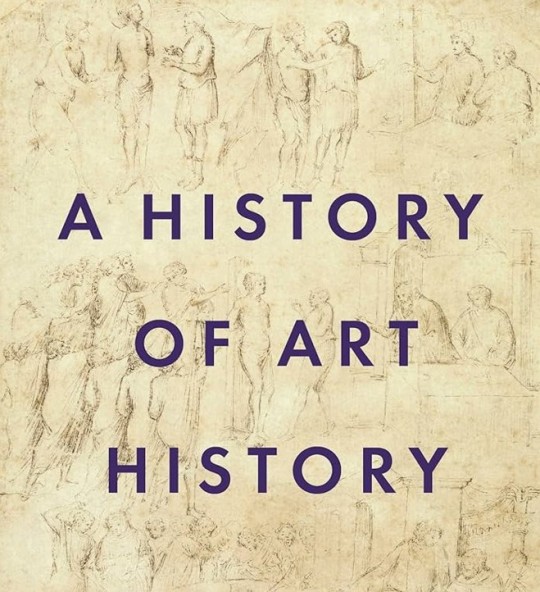
Prehistoric Art (c. 30,000 BCE - c. 3,000 BCE): Prehistoric art includes cave paintings, rock art, and portable art objects created by early humans. These artworks often depict animals, human figures, and abstract symbols and are found in various locations around the world.
Ancient Art (c. 3,000 BCE - c. 500 CE): Ancient art encompasses the art of ancient civilizations such as Mesopotamia, Egypt, Greece, and Rome. This period includes monumental architecture, sculpture, pottery, and decorative arts, reflecting the religious, political, and cultural values of these societies.
Medieval Art (c. 500 CE - c. 1400 CE): Medieval art encompasses the art of the Middle Ages, including Byzantine, Romanesque, and Gothic art. This period is characterized by religious subject matter, intricate manuscript illumination, stained glass windows, and monumental cathedrals.
Renaissance Art (c. 14th century - c. 17th century): The Renaissance was a period of renewed interest in classical antiquity and humanism, marked by innovations in painting, sculpture, and architecture. Artists such as Leonardo da Vinci, Michelangelo, and Raphael created masterpieces that emphasized realism, perspective, and emotional expression.
Baroque Art (c. 17th century - c. 18th century): Baroque art emerged in Europe as a response to the Catholic Counter-Reformation, characterized by dramatic compositions, dynamic movement, and intense emotion. Baroque artists such as Caravaggio, Rembrandt, and Bernini created powerful and theatrical artworks.
Rococo Art (c. 18th century): Rococo art developed in the 18th century as a reaction against the grandeur and solemnity of the Baroque style. Rococo art is characterized by ornate decoration, pastel colors, and playful subject matter, reflecting the aristocratic and bourgeois tastes of the time.
Neoclassical Art (late 18th century - early 19th century): Neoclassicism emerged in the late 18th century as a return to the ideals of classical antiquity, characterized by clarity, order, and simplicity. Artists such as Jacques-Louis David depicted heroic and moralizing subjects inspired by ancient Greek and Roman art.
Romanticism (late 18th century - mid-19th century): Romanticism was a cultural movement that emphasized emotion, imagination, and the sublime, reacting against the rationalism of the Enlightenment. Romantic artists such as J.M.W. Turner and Eugène Delacroix created works that celebrated nature, individualism, and the supernatural.
Modern and Contemporary Art (late 19th century - present): Modern and contemporary art encompass a diverse range of styles, movements, and approaches to art-making. This period includes movements such as Impressionism, Cubism, Surrealism, Abstract Expressionism, Pop Art, and Conceptual Art, as well as contemporary practices in video, installation, performance, and digital art.
1 note
·
View note
Text
Cordoba
September 12, 2023
Everyone agreed that leaving Ronda was hard and we all plan to say we needed an extra day in Ronda on our post trip evaluation. But more wonderful things await - so on the bus we went.
Our destination for tonight is Ubeda (OO-ba-da). This is a small village located within the "mar de olivos" (Sea of Olives) but before we got there Carolina had other things to show us. Cordoba!! (CORE-de-ba)


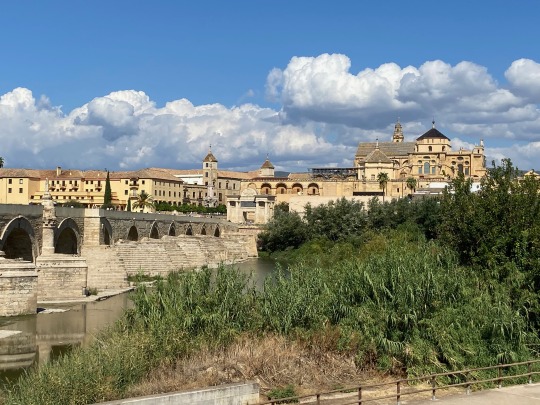
CAN YOU BELIEVE THIS?!??!? Just a stopping off point on the way.... and it just got better.
This city - like Seville - sets on the River Guadalquivir. At one time it was a navigable river all the way to Cordoba - but no longer. The river is just a small stream here now.

This is another city that was founded long ago - by the Phoenicians , Carthaginians, Romans, Visigoths, Moors and Christians - then Moors again - then Christians (and by that I mean Catholics). It was the same ol' same ol': conquer, destroy, build your place on top of theirs over and over again. Then something AMAZING happened. In the late 1400s - Ferdinand (of King Ferdinand and Queen Isabella - decided NOT to demolish the massive mosque of the Moors - but instead keep in and simply make part of it into a Cathedral. Today is it know of the Mosque Cathedral - and it was simply amazing.




Can you see what is mosque and what is cathedral? I mean how cool is it that the cathedral - now the owner of this exquisite site - was able to save this beautiful art done by the Moors hundreds of years ago. It kinda' give you hope.
Following are just some of the amazing sites we saw under this roof:
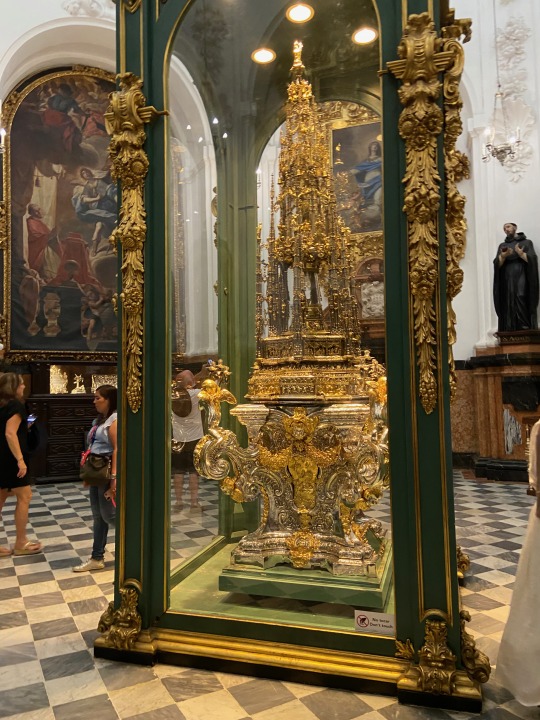
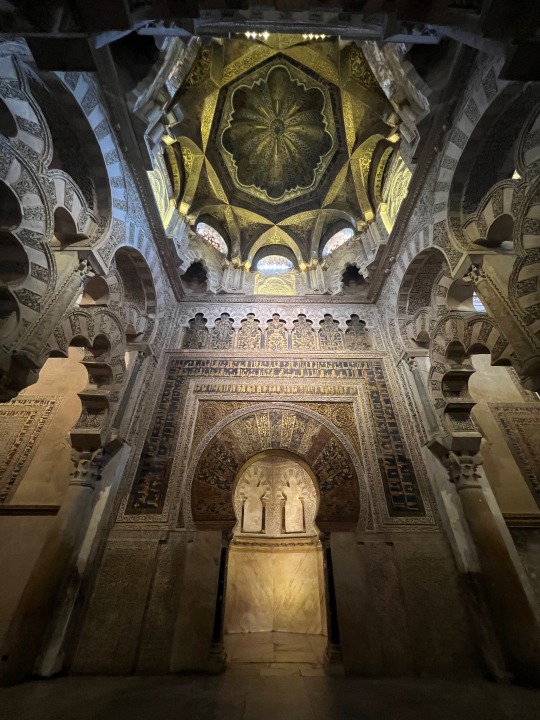



Whatever you prefer - Christian or Muslim architecture - you can certainly agree that Ferdinand made the right decision. It gave me hope think that both of these styles that represent so much to so many live under the same roof.
This is from their website:
"The Mosque-Cathedral of Cordoba (World Heritage Site since 1984) is arguably the most significant monument in the whole of the western Moslem World and one of the most amazing buildings in the world in its own right. The complete evolution of the Omeyan style in Spain can be seen in its different sections, as well as the Gothic, Renaissance and Baroque styles of the Christian part.
The site which the Mosque-Cathedral occupies has been used for the worship of different divinities since ancient times. Under the rule of the Visigoths, the Basilica of San Vicente occupied this very site, and later, after the Moslems bought part of the plot of land, a primitive Mosque was built. The basilica was rectangular in shape, and for a while was shared by Christians and Moslems. As the Moslem population increased, the ruler Abderraman I acquired the whole site and demolished the basilica to make way for the first Alhama (main) Mosque in the city. Some of the original building materials from the Visigothic basilica can still be seen in the first section of the Mosque built by Abderraman I.
The great Mosque is made up of two distinct areas, the courtyard or sahn, with its porticos (the only part built by Abd al- Rahman III), where the minaret stands - nowadays, encased in the Renaissance tower - and the prayer hall, or haram. The area inside is made up of a forest of columns with a harmonious colour scheme of red and white arches. The five separate areas of the Mosque correspond to each of the Five Pillars of Islam."
The Five Pillars of Islam are:
The Profession of Faith
Pray every day, 5 times a day- facing Mecca
Almsgiving
The Fast of Ramadan
The Pilgrimage: The Hajj
One significant point: The quest to build your holy building on top of the conquered holy building was so great that one significant tenant of a mosque was ignored. The building does not face Mecca. The quibla had those in prayer facing south. Below is where the quibla would have been - but it is not there now - of course.
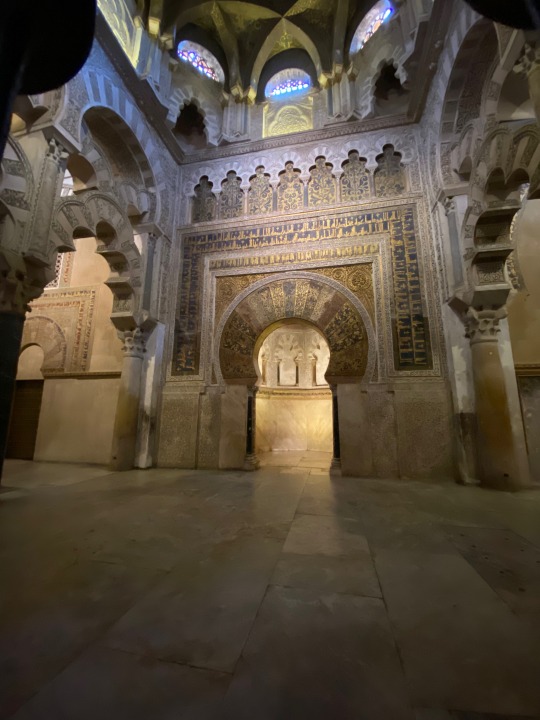
We asked our local guide how Muslim people feel when they come in and see this masterpiece that once was their place of worship. He said - they view it as a art museum. (I'm sorry, I had a hard time buying that.) Then he told us that one time he was touring a group of Muslim women who really wanted to pray in the mosque. They went to their knees but the security force stopped them saying that they could not pray there as it was now sanctified as a cathedral. As he told the story - my mind raced to how absurd it was that prayer of any kind was forbidden in this building built by people who call their god a different name. It got me hot! But his story continued... As they went into the cathedral sanctuary, the Muslim women sitting on pews, asked for a few moments of privacy, and they prayed silently. After that they were happy to continue the tour. You have to wonder if their prayers from the pews of the Cathedral reached their god OR if he/she would only hear them in the parts of the building that had not been re-modeled.
It is this kind of absurd behavior from those who have found the ONLY way, the ONLY truth and the ONLY light that keeps me where I am on the believer scale. A reminder that EVERY devout believer in Janism, Christianity, Judaism, Hinduism, Islam, Shikism, Zoroastrianism, and, and, and believes they have found IT and sadly anyone who believes the other stuff has not.
Back to the building: The courtyard is lush and filled with beautiful trees - but this is a very arid region that gets very little rain. When it was originally built in 785 it contained the ablution fonts as well. The water to keep this area growing and to supply water for the fonts came from a water collection system built into the the structure of the building. Look at the photo below of the arches:
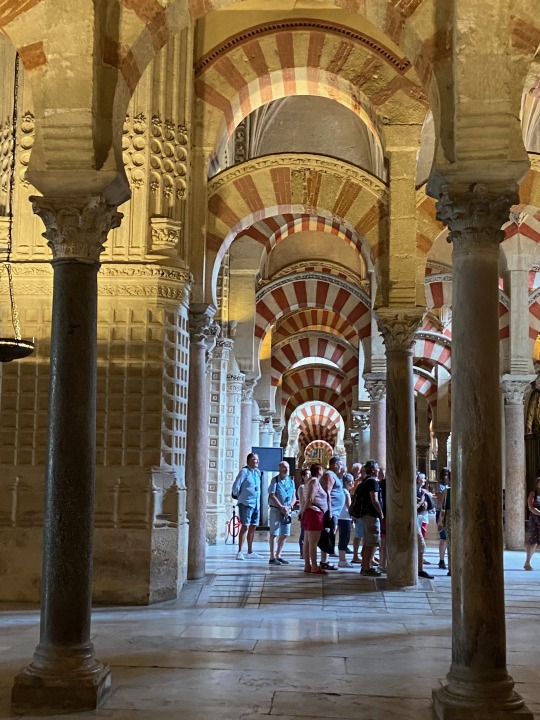
They are indeed structural - but the top arch serves as an aqueduct carrying rainwater that falls on the zigzag roof line to a cistern in the courtyard. I found this great pic on the web that clearly explains what I am talking about. FREAKING BRILLIANT!

We were here for just a few hours and we returned to the bus and headed to Ubeda. That will be what I write about tomorrow.
Stay tuned.
0 notes
Text

The Sabine room
There is a room in Chatsworth house called the Sabine room which has murals painted by sir James Thornhill in 1707 (shown above) depicting the abduction of the saine women by the romans
Sir James was an English painter of historical subjects working in the Italian baroque tradition.
He was responsible for some large-scale schemes of murals, including the "Painted Hall" at the Royal Hospital, Greenwich, the paintings on the inside of the dome of St Paul's Cathedral, and works at Chatsworth House and Wimpole Hall.
Thornhill's vast murals in great houses often related to topical events, as seen through the eyes of his mainly Whig patrons. At Chatsworth, during 1707-8 Thornhill painted a number of walls and ceilings, the most notable being the continuous wall and ceiling painting of the Sabine room, then a lobby, but since used as a bedroom. Here he painted The Rape of the Sabine Women, a vast panorama of mounted warriors carrying off the Sabine women to Rome. He chooses to feature strongly Hersilia, who was deified for her loyalty to her Roman husband, Romulus, as against her Sabine family - a deliberate reference to Mary, lauded by the Whigs for supporting her Protestant husband, William, against her Catholic father, James.
There is also a drawing by Nicolas poussin in the Chatsworth collection called the Sabine women which shows the same scene of the roman Sabine conflict
1 note
·
View note
Text
Porto Cathedral, Portugal

Perched on a hilltop overlooking the Douro River, the Porto Cathedral is one of the most well-known monuments in the town of Porto, the second-largest city in Portugal. Built in the 12th century, this Roman Catholic church has an eclectic architecture style that combines Romanesque, Gothic and Baroque influences. The space inside the cathedral is artfully decorated with blue and white coloured azulejos tiles, which showcase some depictions from the Bible. The tiles are found throughout every part of Portuguese cities, on apartment buildings, churches and public buildings.
1 note
·
View note
Text
7 days in Italy
October 2017 Rome Florence Tuscany and Venice
We made our home base in Rome at hotel Rome Veneto Relais which was centrally located to all the major attractions and train station. Since we were doing day trips being close the train was very important. We also had to be able to walk around with a stroller so we picked the hotel for the location.

Day 1 October 16 Colosseum and top Rome stops
The Quirinal Palace is a historic building in Rome, Italy, one of the three current official residences of the President of the Italian Republic, together with Villa Rosebery in Naples and the Tenuta di Castelporziano, an estate on the outskirts of Rome.
Pantheon: One of the best maintained buildings from Roman times is the Pantheon. What function the building had in those days is still not clear, but the Pantheon was given to the pope by emperor Hadrian in 608.
Colosseo: Unlike many earlier amphitheaters, which had been dug into hillsides to provide adequate support, the Colosseum was a freestanding structure made of stone and concrete. The distinctive exterior had three stories of arched entrances—a total of around 80—supported by semi-circular columns.
The Spanish Steps in Rome, Italy, climb a steep slope between the Piazza di Spagna at the base and Piazza Trinità dei Monti, dominated by the Trinità dei Monti church, at the top. The Spanish steps represent figuratively and metaphorically the close relationship between the Sacred and the Eternal city, shown through the elevation and vastness of the monument. The longest and widest steps in Europe are also an important landmark in Rome as they host events and are home to Italian traditions
Piazza Navona: One of the most remarkable squares and best places to visit in Rome is Piazza Navona. The square therefore owes its elongated shape to its original purpose as a Roman athletics stadium.
Fontana do trevi; Famous for its intricate artwork decorated in the Baroque style, the Trevi Fountain has plenty of history and detail attached to it. Being one of the best structures remaining that showcase the skills in the ancient Roman's craftsmanship.
Rome landmarks: Monument of Vittorio Emanuele One of the most remarkable of Rome landmarks, the monument of the first Italian king Vittorio Emanuelle II, is located next to the Piazza Venezia square. The building is also called the ‘Altara della Patria’ – the altar of the fatherland – and commemorates the unification of Italy. Romans also use nicknames for it such as ‘typewriter’ and ‘wedding cake’. The colossal white building also contains a museum and the tomb of the unknown soldier, which is guarded by two soldiers


Day 2 October 17 Vatican City
Vatican City, a city-state surrounded by Rome, Italy, is the headquarters of the Roman Catholic Church. It's home to the Pope and a trove of iconic art and architecture. The St. Peter’s Basilica, or ‘Basilica di San Pietro in Vaticano’ is the spiritual centre of the Catholic Church and residence of the pope.
Castel Sant’Angelo: Originally, the 2nd-century Castel Sant’Angelo, or Castle of the Holy Angel, was a mausoleum for emperor Hadrian. After archangel Michael appeared here in 590 and ended a plague, pope Pius II had a large bronze statue of the angels placed on top of the castle. The Castle of the Holy Angel was part of Rome's defences and offered a place where popes could shelter, as the Vatican was connected to it by a tunnel.
After a long day we made our PizzaRè was born in Naples, with over hundred years of tradition and experience in catering, offering hospitality, cordiality, merriment and good cuisine.

Day 3 October 18 Florence

Day trip to Florence we walked about 20 mins to the terminal for the speed train. Florence was about an hour away.
Florence, capital of Italy’s Tuscany region, is home to many masterpieces of Renaissance art and architecture. One of its most iconic sights is the Duomo, a cathedral with a terracotta-tiled dome engineered by Brunelleschi and a bell tower by Giotto. The Galleria dell'Accademia displays Michelangelo’s “David” sculpture. The Uffizi Gallery exhibits Botticelli’s “The Birth of Venus” and da Vinci’s “Annunciation.”




Day 4 October 19 Villa Borghese
Villa Borghese is the most popular park in Rome and is considered its green lung.
The Gardens cover an area of 80 hectares and were developed in 1606 by Cardinal Scipione Borghese, who wanted to turn his former vineyard into the most extensive gardens built in Rome.
In the same period, the Cardinal commissioned the building of the Villa Borghese Pinciana to the architect Flaminio Ponzio; today this elegant building houses the Galleria Borghese, The gardens were completely redesigned in the naturalistic English style in XIX century and became a public park in 1903.
Access to the gardens is free. Perfect for a 3 year old to turn around while viewing amazing sculptures.
We stopped for some wine and prosecco at caffe del pinco, lovely Reaturant.




Day 5 October 20 Tuscany

We booked all day tour to Tuscany.
We visited Montepulciano which is a medieval hilltop town in Tuscany, Italy. Surrounded by vineyards, it’s known for its vino nobile red wine. The Torre di Pulcinella is a clock tower topped by a figure of the Pulcinella, a commedia dell’arte character. On the Piazza Grande is the 14th-century Palazzo Comunale, with a tower offering views of the surrounding countryside. Also here is the Duomo, with a huge triptych above its altar.
We made a stop at Abbazia di sant’antim. The Abbey of Sant’Antimo is one of my favorite religious destinations in Italy. It is so simple yet so stunningly beautiful — because of its simplicity. The church we see today was originally built in the 12th century.bIt’s old!! And it’s considered to be a masterpiece of Medieval architecture.
Our final stop Poggio IL Castellare were we had lunch and wine tasting!
The high quality of the wines produced in the Montalcino area was already known at the time of the Etruscans, who had developed active settlements on these small hills.
The name given to the company “Tenuta Poggio Il Castellare” brings us back to the historical roots of the place: the ruins of an ancient community with the remains of houses and towers on top of the hillock bearing the same name.
In Tuscany there are places that can tell you ancient stories. The Baroncini family already started producing wine in 1489. So, the business passed from father to son over 500 years and today, in Montalcino, Bruna and Samuele still produce wine, as if they wanted to prove that time cannot undermine traditions.


Day 6/7 Venice, Murano and Torcello Oct 21&22
We took a last minute trip to Venice booking an air b&b outside of the Venice which cost $75 for a night stay. To get to the air b&b we took the speed train to the Venice Mestre station. Then we took another the train to Quarto d'Altino. Which was 20 minutes was ride. The following morning we went to the station 5 mins away and took the train to Venice. When we arrived the Venice station we took a water taxi B line to the main attractions:
Piazza San Marco is the city's main public square and contains its most famous buildings such as St Mark's Basilica and the Doge's Palace. Napoleon called it “the world's most beautiful drawing room”. Piazza San Marco is in the heart of Venice.
Palazzo ducale The Doge's Palace is a palace built in Venetian Gothic style, and one of the main landmarks of the city of Venice in northern Italy. The palace was the residence of the Doge of Venice, the supreme authority of the former Republic of Venice. It was built in 1340 and extended and modified in the following centuries.
The Museo Correr is a museum in Venice, northern Italy. Located in St. Mark's Square, Venice, it is one of the 11 civic museums run by the Fondazione Musei Civici di Venezia. The museum extends along the southside of the square on the upper floors of the Procuratorie Nuove
The “Ponte dei Sospiri” or “Bridge of Sighs” is an enclosed limestone bridge in baroque style located next to the Doge's Palace in Venice, Italy. It was commissioned by the Doge Marino Grimani, whose family coat-of-arms can be seen in the centre of the facade
Scala did Gigant Originally home to Venice's most powerful man, this Gothic masterpiece is one of the city's top attractions. St Mark's Basilica.
Venice: Burano, Torcello & Murano Boat Tour w/Glassblowing. Discover some of the most famous islands of the Venetian Lagoon on this full-day boat tour. Travel with your guide through Venice Lagoon on a panoramic vessel and enjoy the islands of Murano, Burano, and Torcello. glass-blowing demonstration with a glass master accompanied by a historical explanation of the craft.
Final stop Torcello. We Enjoyed a 1-hour visit to the island and visit historical landmarks such as the Cathedral of Santa Maria Assunta, Attila's Throne, the Devil's Bridge, and the Bell Tower. We where able to stop for some delicious tiramisu and espresso.
We then heading back to the Venice train station and took the speedy train back to Rome.







Day 8 Back to NY
0 notes
Text
TAYUM CHURCH
Church Landmark and historical place The Santa Catalina de Alejandria Parish Church, commonly known as the Tayum Church, is a 19th-century Baroque church located at Brgy. Poblacion, Tayum, Abra, Philippines. The parish church, under the patronage of Saint Catherine of Alexandria, is under the jurisdiction of the Roman Catholic Diocese of Bangued. The church, together with 25 other Spanish-era churches, was declared a National Cultural Treasure by the National Museum of the Philippines in 2001.Parish HistoryThe church of Tayum, unlike the majority of Spanish-era churches in the country, was founded and built by Secular priests to Christianize the native group Tinguians in the region during the 19th-century. Other examples of churches erected by the Secular priests in the Philippines during the above-mentioned era are the Manila Cathedral, Quiapo Church and the San Juan de Dios Church.ArchitectureThe church is predominantly Baroque in style. Its first level is devoid of any embellishment or fenestration save for the main semicircular arched portal and the wave-like cornices and rounded, high-relief pilasters. A similar motif has been adapted on the second level of the façade, which is pierced by three windows. The center of the softly undulating pediment showcases one blind window encased by pilasters. The curved pediment ends smoothly into two large volutes which seat beside two, large, urn-like finials. The pediment is surmounted by a huge, knob-like finial. To the right of the façade stands the four-tiered bell tower with its rectangular base and octagonal upper levels.
Church Landmark and historical place The Santa Catalina de Alejandria Parish Church, commonly known as the Tayum Church, is a 19th-century Baroque church located at Brgy. Poblacion, Tayum, Abra, Philippines. The parish church, under the patronage of Saint Catherine of Alexandria, is under the jurisdiction of the Roman Catholic Diocese of Bangued. The church, together with 25 other Spanish-era churches, was declared a National Cultural Treasure by the National Museum of the Philippines in 2001.Parish HistoryThe church of Tayum, unlike the majority of Spanish-era churches in the country, was founded and built by Secular priests to Christianize the native group Tinguians in the region during the 19th-century. Other examples of churches erected by the Secular priests in the Philippines during the above-mentioned era are the Manila Cathedral, Quiapo Church and the San Juan de Dios Church.ArchitectureThe church is predominantly Baroque in style. Its first level is devoid of any embellishment or fenestration save for the main semicircular arched portal and the wave-like cornices and rounded, high-relief pilasters. A similar motif has been adapted on the second level of the façade, which is pierced by three windows. The center of the softly undulating pediment showcases one blind window encased by pilasters. The curved pediment ends smoothly into two large volutes which seat beside two, large, urn-like finials. The pediment is surmounted by a huge, knob-like finial. To the right of the façade stands the four-tiered bell tower with its rectangular base and octagonal upper levels.
0 notes